
天然ガラス宝石:特性、意味、価値など
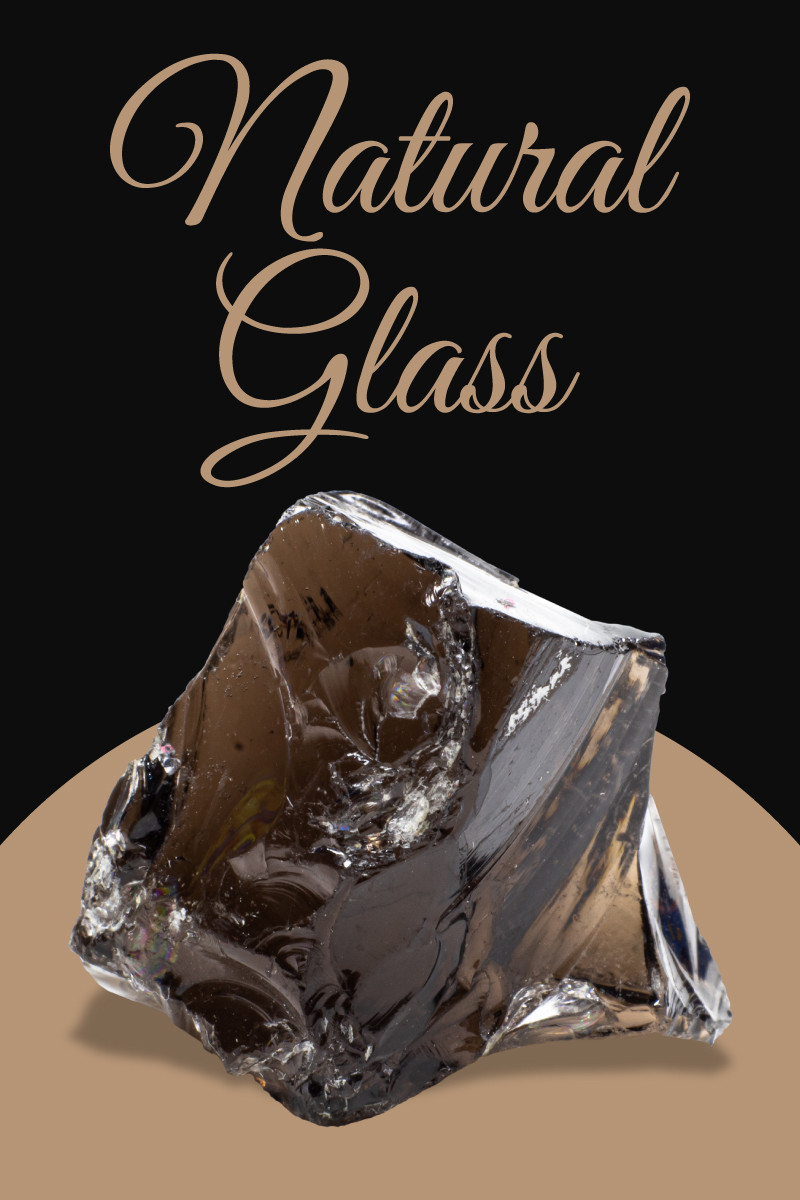 天然ガラス宝石は地球上でも宇宙でも形成されます。この種の宝石は、岩や砂などの物質が非常に高温になり、その後急速に冷えて結晶化できないときに形成されます。
天然ガラス宝石は地球上でも宇宙でも形成されます。この種の宝石は、岩や砂などの物質が非常に高温になり、その後急速に冷えて結晶化できないときに形成されます。
ガラスの重要性は計り知れません。ガラスがなければ、この記事を読んでいないでしょう!でも、「ガラス」と聞くと「人工物」を思い浮かべるのではないでしょうか?もう一度考えてみてください。
地球上と宇宙の両方で、自然は何千年もの間ガラスを形成してきましたが、その多くは美しく、教育的です。
このガイドでは、天然ガラス宝石の種類、価格、歴史、利点などについて説明します。

天然ガラスストーンとは何ですか?
天然ガラスの多くは半貴石です。しかし、ガラスとは一体何なのでしょうか?
ガラスの科学的な定義は複雑ですが、ガラスは液体または固体である可能性のある物質の状態であると考えられています(激しい議論の的となっています)。
鉱物学では、ガラスは均一な組成とランダムな液体のような構造を持つ非晶質(非結晶性)物質です。
リビア砂漠ガラスのような天然ガラスは、 11月の誕生石としてシトリンの代わりに使用でき、モルダバイトは射手座に幸運をもたらします。
天然ガラスの仕様と特徴
天然ガラスのほとんどは主にシリコンで構成されています。ガラス石は鉱物ではなく、鉱物質です。
天然ガラスは透明ですか?必ずしもそうではありません。多くのガラスは半透明から透明ですが、不透明のものや、縁が半透明から不透明のものもあります。
ガラスの宝石はどのように見分けますか?ガラスの宝石(天然および人工)には、特徴的な丸い気泡や渦巻き模様があり、凹面やファセットカットされている場合は型の跡も見られます。
しかし、天然ガラスはどうやって見分けるのでしょうか?多くの天然ガラスには、合成ガラスには見られない鉱物が含まれています。
さらに、宝石の模造品として製造された多くのガラス宝石には、屈折率と密度を天然ガラスよりも高くする添加物が含まれています。
では、合成ガラスは天然ガラスと何が違うのでしょうか?光学的特性と物理的特性はほぼ同じですが、天然ガラスは自然から採取され、合成ガラスは加工されています。
天然ガラスの特性は次のとおりです:
モース硬度:5~6
色: 多くの場合、黄色、青、青緑色。不純物に応じて、事実上あらゆる色になることがあります。
結晶構造:なし(非晶質)
光沢:ガラス質
透明性:透明から不透明
屈折率:1.46~1.69(種類により異なる)
密度:2.2~3.0(種類により異なる)
胸の谷間:なし
骨折:貝殻状
縞模様:白
発光:なし
多色性:なし
複屈折:なし
分散:なし
光学的効果:黒曜石のシャトヤンシー効果と虹彩効果
天然ガラス宝石の種類
以下では、宝石として最もよく使用される天然ガラスの例を紹介します。
黒曜石
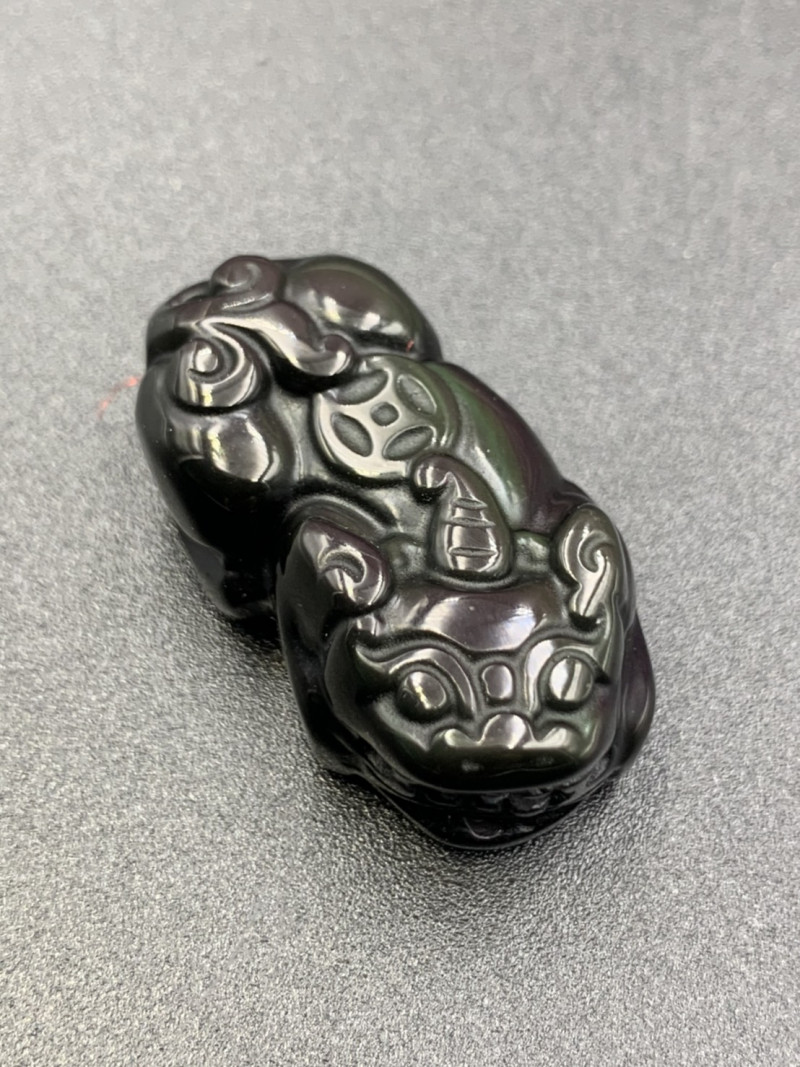 上の写真:虹色の「レインボー」黒曜石
上の写真:虹色の「レインボー」黒曜石
黒曜石は、しばしば単に「火山ガラス」とも呼ばれ、最も人気のある天然ガラス宝石です。流紋岩質のマグマから形成されます。黒曜石は通常、光沢のある黒色で、磁鉄鉱を内包していることが多いです。
その他の不純物や含有物によって見た目が異なる場合があります。
酸化鉄:赤と茶色
長石または磁鉄鉱ナノ粒子:虹のような光沢
閉じ込められたガス泡:金色の光沢
放射状に集まったクリストバライト結晶:雪の結晶模様
配向ヘデンベルグ石ナノロッド:カラフルな虹色の縞模様
軽石は黒曜石に似ていますが、噴出した溶岩の中に閉じ込められたガスの泡によってできた穴が豊富に含まれています。
テクタイト
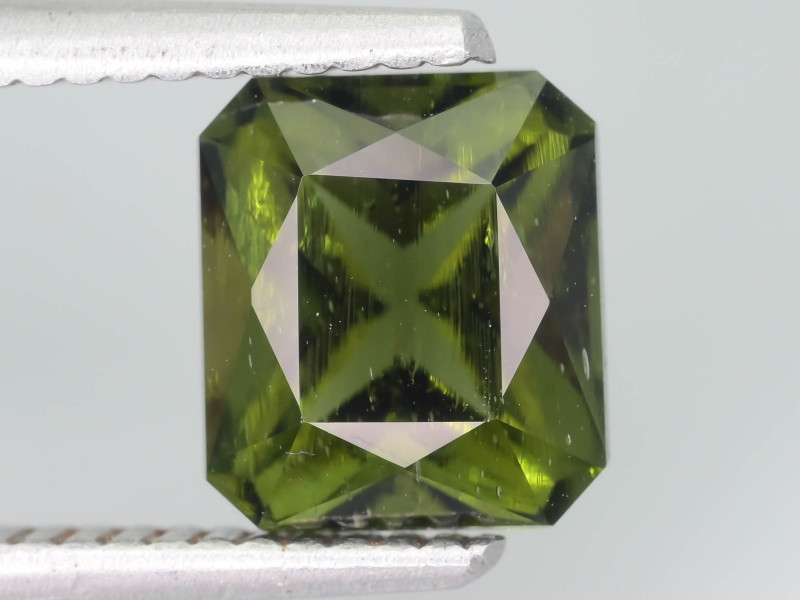 上の写真:モルダバイト宝石
上の写真:モルダバイト宝石
テクタイトは、隕石の衝突により物質が急速に溶解し、空中に飛び散り、その後地球に落下する際に急速に冷えてガラスになることで形成される衝撃ガラスの一種です。
テクタイトガラスの種類は、一般的に、発見された「散らばった原野」にちなんで命名されています。たとえば、次のようになります。
モルダバイト:チェコのモルダウ川産
リビア砂漠ガラス:リビア砂漠産
オーストラライト:オーストラリア産
アイボライト:コートジボワール出身
ダーウィン・グラス:タスマニアのダーウィン山産
テクタイトは黒、茶、灰色、白、緑の色をしています。不規則で複雑な形状をしていたり、ガラス質の小石に似たものが多く、内部に多数の気泡が含まれているものが多くあります。
フルグライト
 上の写真:タイプI砂輝石|画像提供:Rama、 CC-BY-SA-2.0
上の写真:タイプI砂輝石|画像提供:Rama、 CC-BY-SA-2.0
フルグライト、または「化石化した稲妻」は、落雷によって形成された、砂で覆われた溶融シリカです。
雷が何に当たったかによって、フルグライトは主に 4 つのクラスに分けられます。
タイプI :湿った砂からできている。薄いガラス壁、ほぼ砂。95~100%がガラス。
タイプ II : 粘土質の土壌から作られ、ガラス壁が厚く、ガラスの割合が最大 90%
タイプIII :石灰質堆積物由来。主にカリケと呼ばれる炭酸カルシウムベースのセメント。ガラス質が最大10パーセント。
タイプIV :岩石から作られ、ガラス壁が厚く、ガラスの割合が最大90パーセント
種類によって外観や大きさは異なります。通常は黒または黄褐色ですが、不純物によって他の色になることもあります。人工物に落雷すると、色のついたフルグライトが形成されることもあります。
火山ガラス
黒曜石のほかに、注目すべき火山ガラスの種類は次のとおりです。
タキライト:黒または暗褐色、樹脂光沢、タールに似ている。小さなオリビンまたは長石の結晶を含むこともある。シデロメラン:透明、黄褐色
パラゴナイト:火山ガラスの変質作用によって生じた様々な生成物の総称。水と玄武岩の溶融物、または玄武岩ガラスの風化によるもの。多くの場合、黄橙色から茶色。ゲルパラゴナイト:無色透明、滑らか。繊維状パラゴナイト:半透明、繊維状または粒状、複屈折性。
ペレの髪:黄金色で、麦わらや髪の毛に似ている。冷えた溶岩が細い繊維状に伸びて形成され、風で運ばれることが多い。
ペレの涙:真っ黒な涙のような雫で、通常はペレの髪の毛の先端に現れます(下の写真)。
リム・オ・ペレ(ペレの海藻) :褐色がかった緑色からほぼ無色で、砕けたフレーク状、薄いシート状のもので、海藻に似ている。
最後の 3 つは、ハワイの火山の女神ペレにちなんで名付けられています。
 上の写真:ペレの涙|画像提供:James St. John、 Flickr 、 CC-BY-SA-2.0
上の写真:ペレの涙|画像提供:James St. John、 Flickr 、 CC-BY-SA-2.0
天然ガラスの歴史
人類がガラスの製造を始めたのは約4000年前ですが、天然ガラスの利用は遥か昔に遡ります。石器時代には黒曜石の道具が作られていました。紀元前4000年頃に発見された最初の鏡は、磨かれた黒曜石でした。
しかし、自然界のガラスは人類が誕生するずっと前から存在していました。最も古いテクタイトの塊は、非鳥類恐竜が絶滅した時代にまで遡り、その絶滅の原因となった隕石の衝突によって形成されたと考えられます。
最古のテクタイト製道具は紀元前4000年から6000年頃のものとされています。テクタイトは紀元前500年頃には幸運を呼ぶものとしても使われていました。テクタイトに関する最初の文献は西暦950年に劉舜によって記されており、彼はそれを雷公墨(中国語で「雷神の硯」)と呼んでいました。
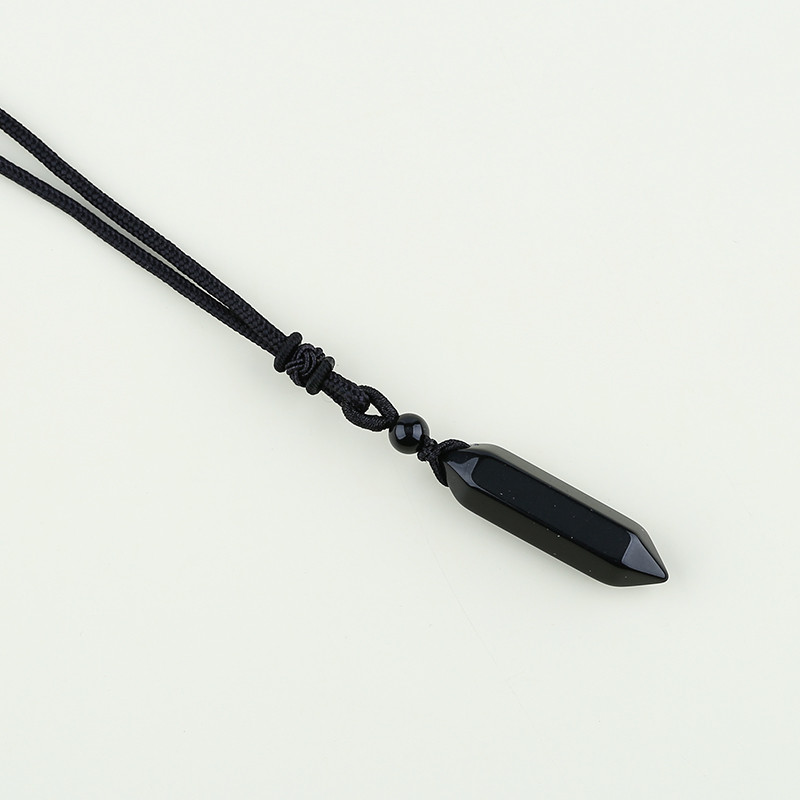 上の写真:黒曜石のペンダント
上の写真:黒曜石のペンダント
天然ガラスの治癒特性
天然ガラス宝石は強力なヒーリングストーンとして使用できます。豊富なカラーバリエーションから、あらゆるチャクラを開くチャクラストーンとして活用できます。
黒曜石やペレの涙のような暗いガラス質の宝石は、透視や占いによく用いられます。雷に由来するフルグライトは、精神を活性化させ、血行を促進すると言われています。
 上の写真:モルダバイトの指輪
上の写真:モルダバイトの指輪
天然ガラス宝石の特性
天然ガラス宝石は他の宝石のように等級分けされていませんが、その価値に影響を与える可能性のある等級分けの特性について説明します。
色:黒曜石、テクタイト、リビア砂漠ガラスなど、希少な色のものはより価値が高くなります。虹彩の輝きも価値を高めます。
カット: 一般的に、高品質のファセットカットが最も価値があります。ただし、 カボションとしてカットする必要があるシャトヤント黒曜石は例外です。
透明性: 透明度が高いほど、天然ガラスの価値が高くなります。
サイズ:テクタイトの価値を決める要素として、サイズが最も重要となることが多く、サイズが大きいほど価格が高くなります。フルグライトの価値を決める要素としては、サイズが多少あります。
希少性: テクタイトのような希少な天然ガラスは、黒曜石のような一般的なガラスよりも価値があります。
天然ガラスの形成と供給源
天然ガラスはいくつかの方法で形成されます。
火山活動:マグマまたは溶岩が急速に冷えてガラスになる(火山ガラス、黒曜石)
隕石の衝突:隕石が地球に衝突し、物質が急速に溶けて空中に舞い上がり、その後急速に冷えてガラス状になり、地球に落下する(テクタイト)
気象現象:雷が砂や岩に落ちて、それを溶かし、シリカをガラスに融合させる(フルグライト)
黒曜石のような一部の石は天然のガラス溶岩石であると考えられています。
六放線虫類海綿動物(別名「ガラス海綿」)のような一部の動物は、不定形のシリカを主成分とする組織(骨針)を持っています。一部の科学者はこれをガラス骨格(海綿動物が死んだ後に残るもの(サンゴなど))と呼んでいますが、単にガラスのような形をしているだけだと主張する科学者もいます。
2015年、科学者たちは新たな有機ガラスを発見しました。それは、脱水状態にある小さな海生生物クマムシ(別名クマムシ)が作り出す保護膜「バイオガラス」です。このガラスは、クマムシの細胞が再び水分を補給されるまで、クマムシをしっかりとつなぎとめています。
採掘場所
天然ガラスはどこで採れるのでしょうか?天然ガラスは世界中で採れますが、地質学的な場所によって特定の種類が採れます。
黒曜石のような火山ガラスは火山地帯で発見され、世界中に多くの鉱床が存在します。ペレの髪とペレの涙も火山地帯で発見されており、特にニカラグア、イタリア、エチオピア、アイスランドで多く見られます。
テクタイトの場所については、テクタイト情報ガイドをご覧ください。

上の写真:スノーフレークオブシディアンイヤリング
天然ガラスの価格と価値
天然ガラス石の価格は個々の石によって異なりますが、人工ガラス宝石よりも高価です。
黒曜石は最も手頃な価格で、通常は 1 ポンドあたり 2 ~ 5 ドルかかります。
上記のリンク先にある情報ガイドで、様々なテクタイトの価格帯をご確認いただけます。アイボライトとウルグアイトは通常最も高価ですが、ザマンシナイトとフィリピンナイトは通常最もお手頃です。
フルグライトの価格は、約 5 ドルから 5,000 ドル以上まで幅広くあります。
天然ガラスのお手入れとメンテナンス
最後に、 宝石のお手入れについてです。天然ガラスのほとんどは触っても安全ですが、ペレの髪を扱う際は必ず手袋を着用してください。
中程度の硬度の天然ガラス宝石ジュエリー、特に指輪には、保護セッティングをお勧めします。石は、中性洗剤、ぬるま湯、柔らかい歯ブラシで洗ってください。
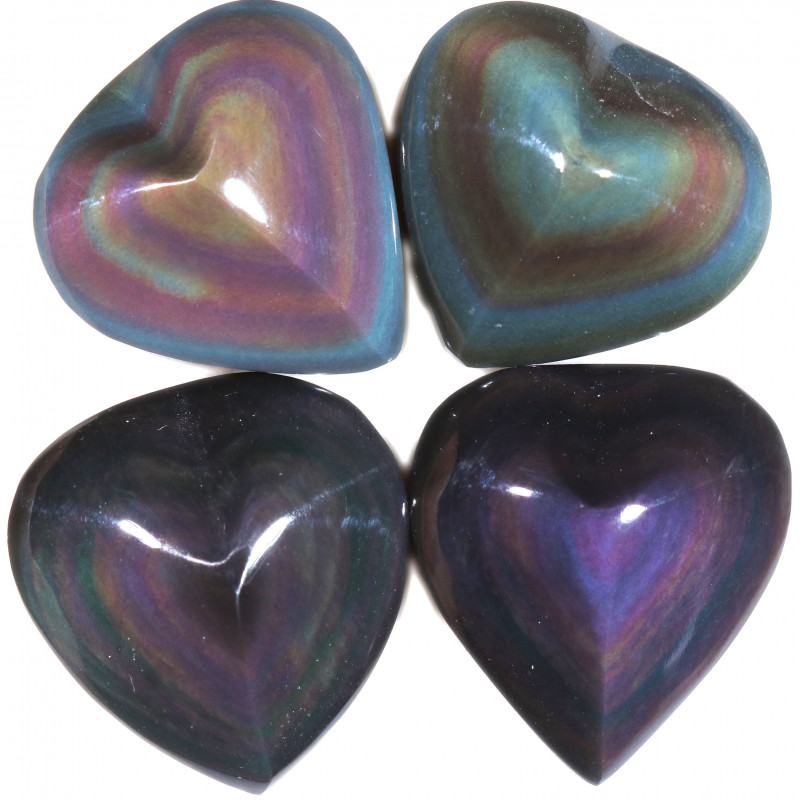 上の写真:レインボーオブシディアン
上の写真:レインボーオブシディアン
天然ガラス宝石でチャンスの窓を開きましょう!
宝石の自然な美しさを愛するなら、天然ガラスの宝石は、地球と宇宙がもたらすものへの視野を広げる素晴らしい方法です。ユニークな形や色が豊富に揃っているので、ぜひお試しください。
Gemstone Encyclopedia検索
最新記事
レインボーラティスサンストーンは、様々な内包物によって3つのゴージャスな光学的効果を持つ長石の一種です。燃えるように鮮やかな色合いと格子模様が、コレクターにとって希少な宝石となっています。
12th Jan 2026
チューライトは、ゾイサイト鉱物ファミリーに属する、鮮やかなバラ色の色合いを示す希少なノルウェー産の宝石で、ジュエリーのセッティングやペンダントによく使用されます。
6th Jan 2026
記事のカテゴリ
How To's is where you will find helpful articles from gem Rock Auctions on how to cut gemstones, select gemstones and buy gemstones.
9記事数
